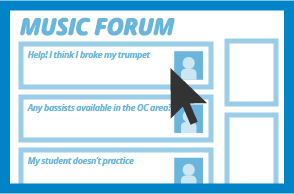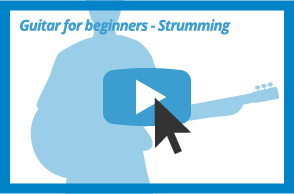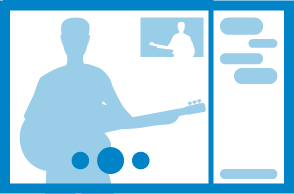Music is a vital part of life for many people, and always has been. It’s a part of our history, constantly changing – so much so that it’s easy to identify a time period based on its music. And for as long as music has been passed down, there has been music education, our way of keeping musical traditions alive for generations to come.
Over the years, how music is taught has evolved – although we would argue that it hasn’t evolved fast enough. The current music education model has been around for a long time but has not changed much in the last century, despite technology and music itself rapidly evolving around it. With such an outdated curriculum, younger generations are increasingly unable to relate to or enjoy it. It’s important to not fall into the mindset of doing things “because that’s the way it’s always been done” or “that’s what worked for me when I was growing up” when it isn’t working for all of your students.
…a huge divide today between “music that I have to practice” and “music that I love listening to”.
Some of it is just a change in mindset. All music, no matter how trash you think it may be, is still music, and there should not be such a huge divide today between “music that I have to practice” and “music that I love listening to”. Even if it’s just once in a while, find some overlap and let students use their new skills on music they love. Many kids don’t love classical music right off the bat, and that’s fine. They may grow into it later if they don’t get a chance to dislike it now.
The rapid rise of technology we’ve seen in the past 20 years is playing a huge part in the changes that are happening in music education. In a nutshell, technology eases the process of giving and taking information. Students can now learn from a teacher in a different country or learn from online tutorials. There are also plenty of new tools available that can help modernize your lessons and engage students, make music lessons more accessible, and help to promote self-improvement in students. In this article, we will take a look at some of the ways technology is helping to shape music education as we know it.

1. Forums & online groups
Online forums and communities were one of the earliest ways musicians from all over the world connected online. Forums provide an environment filled with information and direct communication between students, artists and industry-professionals. This is a great resource for those who are self-taught or anyone just looking for tips & troubleshooting. It’s also a great resource for finding more great resources! If you have a question, chances are it’s been asked already and the answer is online. However, take everything with a grain of salt and do your own research – you can’t always trust what a stranger says on the internet.

2. Online tutorials
Music education, music marketing, audio production, conducting – you name it. There are high-quality courses taught by seasoned professionals in the industry for whatever you may be studying. Most will be for a fee, but you may find some for free. The idea of online courses aren’t always met with enthusiasm, especially by those who believe the best way to learn is 1-on-1 with a teacher, not by watching videos. This may still be the best way for most cases, but simply having the option of online classes has expanded the population of people who can learn music. Now, those who can’t afford or commit to a weekly lesson can learn at their own pace in the convenience of their own home. I say, the more people are able to engage in and learn about music as a hobby or side interest, the better!
Teacher Tip: Platforms like YouTube, Instagram, and other social media can allow music educators to reach a larger audience. Putting out tutorials is a great way to reach more people and get your name out, and for a great cause! Help out the new generation of musicians and become established as an expert.
You can also put your favorite tutorials in an assignment for students to watch at home as a supplement or reminder to their lessons (Better Practice makes this super easy!). Maybe you ran out of time to explain a concept – instead of waiting a week for the next lesson, attach a tutorial and have your student review it ahead of time.

3. Music education apps
The invention of apps has introduced a whole new world of conveniences, making life a lot easier for the modern music student! ~~Sometimes~~ A lot of the time, it’s hard to keep up with what you’re being taught in real time. Instead of strenuously taking notes the entire lesson (which also wastes time), record important lines instead to review later. Reviewing later is a great way to ingrain things into your memory, and recordings also allow you to capture ideas in the moment.
Teacher Tip: You can use recordings to send important clips from lessons (or the whole lesson!). Many teachers supplement practice with theory or sight-reading apps. These are skills that require repetition to master (often tediously), and gamifying it can be a great way to keep students engaged. There are great apps of metronomes, tuners, backing tracks – the possibilities are endless.
For the practice side, music practice apps like Better Practice can redefine the entire learning process. You can organize assignments, recordings, and sheet music while engaging all of your students individually.

4. Video games
Students not practicing because they’re too into video games? Today, we can take that competitive spirit and love for games into music practice. There’s many great music-related games that make for great rhythm practice (though it may not be the greatest single way to master an instrument). Some examples are drum games, Guitar Hero, and Rock Band. One drummer I know got his start on Rock Band, then translated that interest to a real drumset later on. It’s a great way to provide exposure and interest in music & provides practice in playing with a band (another skill you don’t often get to work on at home). There are even video games like Rocksmith that simply boost the learning experience by making use of real electric instruments plugged right into the laptop.

5. Online lessons
Last but not least: we can’t end this article without mentioning online lessons (you may have heard terms such as “remote lessons” and “Skype lessons” referring to the same thing). It’s become more prevalent lately and I only see it becoming more normalized in the music education community as time goes on. With the invention of webcams and video calling software, teachers realized they could now continue to teach a student who had moved away or teach busy/adult students who could not make a trip to the studio every week. Students also benefit, having a larger pool of teachers to choose from, not confined to their local area.
Teaching online has definitely become a separate skillset in its own, especially those specialized in teaching young children or children with disabilities. One has to understand how to communicate movement and posture without the aid of touch or in-person demonstration. Commanding undivided attention through a screen is another battle. It’s definitely not for everyone, but it can open up a new world of teaching if you do pursue it.
See also:
Pros and cons of remote music lessons
How to get started with remote music lessons
These are just a few things we’ve noticed more and more students and teachers using lately. What do you think? Do you see these trends happening more and more, and do you welcome them, or say “No way”? We would love to hear your opinions and any other trends you may have noticed in the comments below.
Related articles:
My experience performing with an iPad
The best iOS Autocorrect Tip for the Frustrated Musician
Getting the Right Angle: Recording Video for Piano Players
Going Paperless with Written Assignments